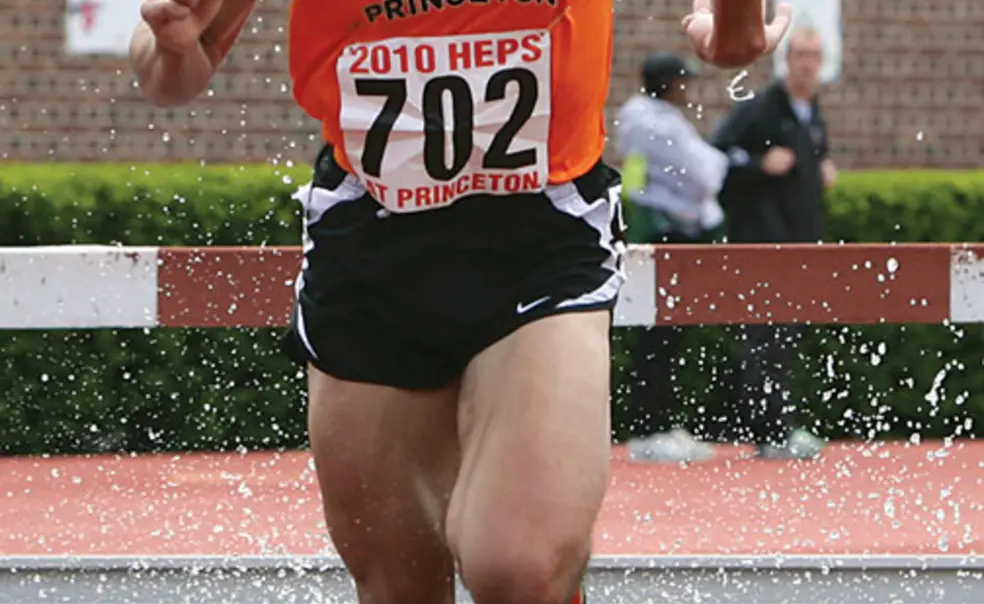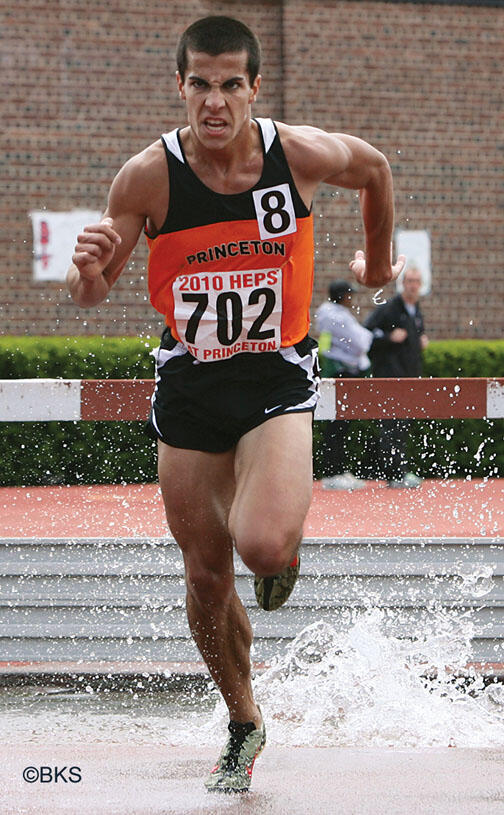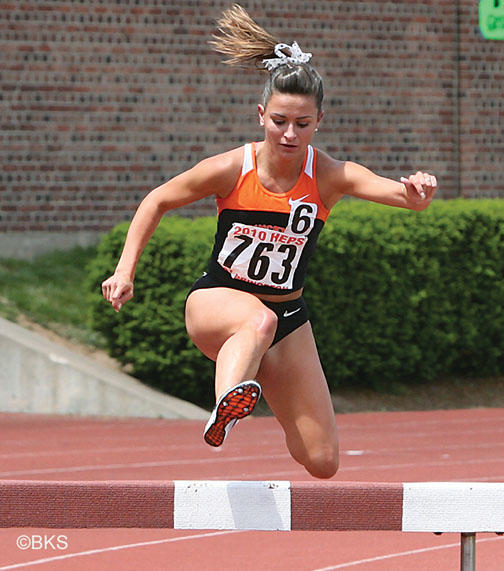Cabral '12, Higginson '11 find thrills in the 'chase
Steeplechase may be track and field’s most unusual event: a 3,000-meter race in which runners clear sturdy hurdles about every 75 meters and make seven leaps over a shallow pit of water. It tests athleticism, endurance, and perseverance — and for two Princeton athletes, it has provided a path to national distinction.
Donn Cabral ’12 captured a silver medal in the men’s steeplechase at last year’s NCAA Championships in Eugene, Ore., just two months after first participating in the event. Ashley Higginson ’11, also a relative newcomer, placed third in the women’s steeplechase finals. Both have hopes of returning to the NCAA podium in June.
Despite his rapid climb, Cabral insists that success in the steeplechase did not come easily. His first race went so poorly that he thought it would be his last. But coach Steve Dolan, a former decathlete who had taught Cabral to hurdle, convinced him to try again. Cabral won his second race, at the 2010 Penn Relays, running 11 seconds faster than the winning time at the previous year’s Ivy Heptagonal Championships.
“Midway through the race, I felt like I had the hang of it,” Cabral says. “I guess I decided I was stuck with it from there.”
Cabral, who played soccer in high school, has the requisite skills for a champion steeplechaser: coordination, the ability to endure the pounding routine of jumping and landing, and top-flight speed. His running résumé includes All-America honors in both cross country and the 5,000-meter run. Higginson also is a former soccer player and an elite distance runner. She placed sixth in the 3,000-meter run at the NCAA Indoor Championships in March.
Steeplechase, Higginson says, introduced her to another side of track: the detailed analysis of technique normally reserved for sprinters and short-distance hurdlers. With help from assistant coach Robert Abdullah, she has slowed down her training sessions to identify and improve weak points in her hurdling.
In addition to clearing the hurdles and water-jumps, steeplechasers have to adopt an atypical mindset while racing. Distance runners ordinarily aim to find a rhythm and stay as relaxed as possible, but in steeplechase, they don’t have that luxury. Each hurdle temporarily changes the pace, Cabral says, so you’re constantly trying to “get back into your race, even though the rhythm is breaking 35 times.”
Stumbles and falls also can break the tempo. In Higginson’s view, that provides a little extra motivation to get out in front of the traffic. When she started running the event in 2009, she says, “A lot of my leading came from my fear of having to jump behind someone.”
On campus, Higginson and Cabral have found that the term “steeplechase” often draws quizzical looks, and even after a quick explanation, some people are confused. Cabral’s favorite replies range from the concerned (“Sounds painful!”) to the equine (“Don’t they do that with horses?”).
But in the track world, Higginson says, steeplechase has found a following. “Somehow it’s gotten kind of a cool status — a little quirky, a little different, but it’s an amazing event,” she says. “Times get faster in the collegiate circles every year — ridiculously faster — and it’s cool to be in an event that’s very clearly growing.”













No responses yet